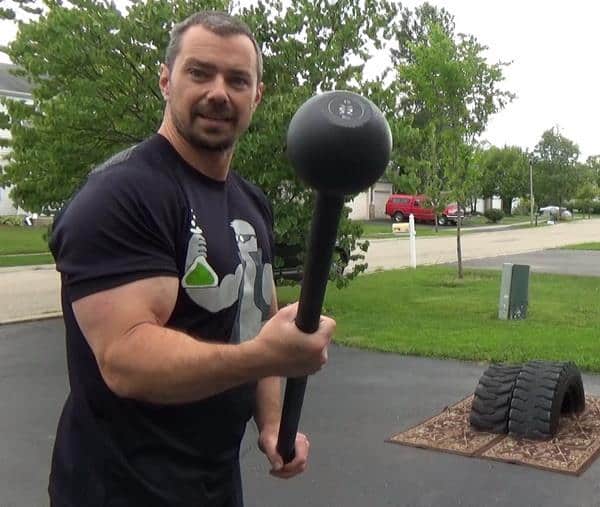The Bent-Over Lateral Raise is one of the most common exercises used for working the rear or posterior deltoids. For most trainers, it can be difficult to really feel the rear delts working during this movement as the larger, stronger muscles of the back have a tendency to take over.
To really get the most out of this exercise, you need to remove the back muscles from the equation. This can be easily accomplished with a simple technique.
How to Do It:
First, get yourself into position for the Bent-Over Lateral Raise. This can either be standing, seated or with your chest on an incline bench. The same technique applies to all variations.
Your arms should be hanging straight down in the start position.
Now, drop your shoulders down towards the ground without moving your torso. You will be keeping them down throughout the exercise. This forces the back muscles into a stretched position, thereby reducing their involvement in the exercise.
Once your shoulders are dropped, start the movement by doing a reverse wrist curl with the dumbells. This means simply bending your wrists back and up and holding them there.
Now squeeze the weights up to the top position of the lateral so that they are in line with your head at the top and squeeze hard at the top.
Here is an excellent tip for the way up: as you raise the dumbells, imagine as though you are trying to wrap the backs of your arms around a tree. You’ve often heard that you should try to wrap your arms around a tree for dumbell flyes, now apply it to this movement.
Also, try to force your hands into as wide of an arc as possible and keep the dumbells as far away from your body as possible. This technique will help you to keep your shoulders down as you lift the weights.
What all these tips accomplish is to reduce the ability of the stronger back muscles to contract during the exercise, forcing the rear delt muscles to “shoulder” the burden of the exercise.
The keys to remember are:
1. Shoulders down throughout the movement.
2. Do a reverse wrist curl at the start.
3. Wrap your arms around a tree on the way up.
4. Raise the dumbells up in line with your head.
Incorporating these tips into the bent-over lateral movement will target your rear delts much harder than standard form and really help you balance that shoulder development.

Nick Nilsson is known in the fitness industry as the “Mad Scientist of Muscle,” and for good reason! For more than 28 years, Nick has been creating unique, new exercises and training techniques and putting together some of the most innovative muscle-building and fat-loss programs available anywhere.









Damned fine timing. I was literally pulling out my bench to get set up for some rear delt laterals. 🙂
I think I understand most of the tips except for the tree wrapping visualization. Wouldn’t my elbows have to bend the opposite way for this to happen? I don’t suppose there’s a video demo of Nilsson’s variant of this exercise?
Yeah, the idea with the tree is to imagine like you’re trying to mold the back of your arms around the tree – you definitely can’t bend the elbows back. It’s more the visual idea I’m going for there.
I don’t have a video right now, but I’ll see about getting one together here – it’ll probably help.
Thanks Nick, so arms are straight throughout the entire rep, correct? Most rear delt laterals I’ve seen have them slightly bent. Just want to make sure I’ve got this new technique down.
Exactly right – the straight elbow means you have to use less weight but I find it pays off with a much better contraction.
Nick,
A video would be great. As a writer, I can’t tell you how many times I myself have read an exercise description, scratched my head, seen a demo of it, and wondered “Well,, why did they describe it that way?!” Beyond that, I think studies show that most people are visual learners, so thanks for the ideas.
Lastly, why is a bent over raise better than a standing one?
Thanks,
– JC
@JC – the bent raise targets the rear delts better just because of the body position.
When doing the raise standing, you’re working the lateral delts.
would like to see visual of this in some form
Superbly written out. Dont need a visual as its perfectly discribed. Done well.
Gonna give it a go tonight.